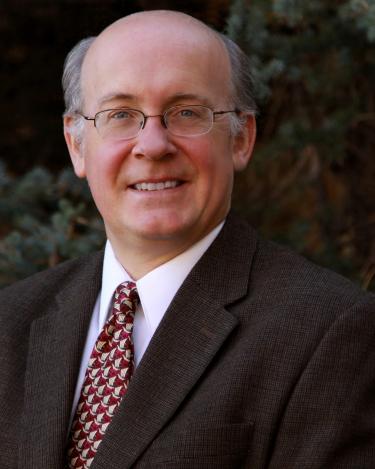It is with a certain humility that Dr. Daniel Scheeres acknowledges that he has an asteroid named in his honor. Throughout his career, Dr. Scheeres has contributed extensively to the fields of astrodynamics and orbital determination, with a specific interest in asteroids.
When Dr. Scheeres received his Ph.D. from the University of Michigan in 1992, he was focused on celestial mechanics - a primarily theoretical field. After graduation, he went to JPL, where he worked on spacecraft navigation for the NEAR (Near Earth Asteroid Rendezvous) mission.

For Scheeres, the NEAR mission represented his “first contact” with the problem of “what do you do with a spacecraft and an asteroid?” The mission was designed to study Eros, a near-Earth asteroid about the size of Manhattan, from close orbit over a period of one year. It became the first mission to orbit an asteroid, and the first to touch down on its surface.
During his JPL experiences, Scheeres realized that “all the theoretical stuff that I’d learned in my Ph.D. could be applied to the problem of orbiting asteroids.” He quickly became intrigued by the field of asteroid navigation and its plethora of “cool questions to answer.”
There is often a distinction drawn between those on the engineering-side of mission design, and those on the science. As Scheeres explains, “scientists pose problems, engineers solve them.”
Originally on the engineering-side of mission design, Scheeres began asking himself questions such as: What is the range of properties that asteroids have which impact navigation? What clues from navigation can we link to asteroid formation? He knew that he couldn't wait around for someone else to tackle these scientific inquiries; instead, he decided to explore them himself.
Following professorships at Iowa State University and the University of Michigan, Scheeres joined the CU AES faculty in 2008. He has since become a vital member of the CCAR research community, heading the Celestial and Spaceflight Mechanics Laboratory. Scheeres’ research spans astrodynamics and navigation to planetary science.
A primary focus of Scheeres’ research is determining the orbital mechanics of small bodies (such as moons and asteroids) with applications to planetary and asteroid missions. Currently, Scheeres is serving as the Radio Science Lead and Co-Investigator for NASA’s OSIRIS REx Asteroid Sample Return Mission.

Bennu, the asteroid destination of NASA's OSIRIS REx mission.
Asteroids, with their irregular shapes and densities, do not have uniform mass distributions. Radio science data can be used to measure the gravity coefficients of an asteroid, and subsequently, its mass distribution. Scheeres explains:
“The coolest thing you could find with radio science data is whether the center of the body is under-dense or over-dense, or if the crust is over-dense [etc.]. Each of these scenarios is tied to a specific theory [of asteroid evolution]. Even though they are little bodies, asteroids experience complex physics. The only way to determine which theory is correct is to take measurements.”
In recognition of Dr. Scheeres extensive contributions to the study of astrodynamics around small bodies, the Asteroid (8887) 1994LK1 was renamed (8887) Scheeres.
Dr. Scheeres has spent a career exploring the science and navigational challenges of asteroids. To him, such research has broad scientific benefits:
“Small bodies are left over from the formational processes of our solar system. The more you understand them, the better you are able to have a window into the past. It’s like archeology. Asteroids strongly influence life on Earth – they killed the dinosaurs, they brought minerals, they brought water. They are at the heart of a lot of fundamental questions about why we are here now.”
In addition, asteroids offer a platform by which we can explore deeper into our universe:
“If we want to explore beyond the earth, asteroids are the cheapest places to go. Understanding asteroids is crucial if you want to utilize the resources [such as minerals] that they present in space.”
Lastly, asteroids have the potential to pose significant societal repercussions:
“Asteroids hit the earth all the time. If a big enough one hits, it would reset world civilization. At some point, we will see a big enough asteroid to make us worry - we will then have to figure out a way to deflect it. Knowing that something like this is going to happen in the future, it is important to understand all aspects of asteroids, including their strength and mass distributions.”
In 2014, Dr. Scheeres was named a Distinguished Professor, one of the highest honors given to CU-Boulder faculty.
-Written By: Ari Sandberg, Intern
